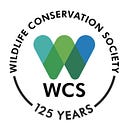Conservation Now: Blogging from IUCN 2016
The New U.S. National Mammal, the Bison Is a Unifying Icon

By John F. Calvelli
September 4, 2016
[NOTE: This is the second in a series of blogs by WCS staff at the IUCN World Conservation Congress taking place September 1–10 in Honolulu, Hawaii]
I am currently attending the World Conservation Congress and, as you can well imagine, we are discussing many of the challenges facing wildlife. In the midst of these sessions I have been fortunate to participate in one that tells the story that when we work together we can succeed and bring nature back from the brink.
I am speaking about bison. The bison has been culturally, historically and ecologically important to the United States. They are also deeply connected to the history of WCS (Wildlife Conservation Society) — which I represent as Executive Vice President for Public Affairs — and its Bronx Zoo. Amazingly, more than 30 million were hunted in the 1800s until fewer than one thousand remained.
Thanks to the heroic efforts at the turn of the 20th century by Bronx Zoo founding director William Hornaday and countless Americans, including President Theodore Roosevelt, the extinction of this majestic animal was prevented. Many consider this the first successful conservation story in U.S. history.

We thought it was important to share that story at the Congress. History was made this past spring as legislation to make the bison the national mammal of the United States was signed into law by President Obama. This marked the final step in a four-year effort to honor the bison. As the national mammal, bison joined the bald eagle (the U.S. national emblem, designated in 1782 by the 2nd Continental Congress) as an official symbol of the U.S.
The victory was achieved largely through the collective work of the Vote Bison Coalition, a group of more than 60 organizations, tribes, and businesses led by the Inter Tribal Buffalo Council, National Bison Association, and WCS.

The effort to make the bison our national mammal could never have been achieved without the support of many dedicated members of the U.S. Congress — including Sen. John Hoeven (R-ND), Sen. Martin Heinrich (D-NM), Rep. William Lacy Clay (D-MO), Rep. Jeff Fortenberry (R-NE), Rep. Kristi Noem (R-SD), and Rep. José Serrano (D-NY). These leaders championed the bill in Congress, along with many co-sponsors from both parties.
For me, the adoption of bison as U.S. national mammal powerfully validates the many meaningful ways this animal represents the nation. As an ecological keystone, cultural bedrock, and economic driver, the bison conveys values such as unity, resilience, and commitment to healthy landscapes and communities.

But on a personal level, the work of collaborating with our Congressional champions has been an especially rewarding experience. One of the bill’s longtime advocates, Rep. Clay of Missouri, has said “no other indigenous species tells America’s story” better than the bison, an animal that is a symbol of strength and Native American culture.
In fact, a member of Rep. Clay’s family actually served as a Buffalo Soldier, and when he met with me to discuss the legislation I could visibly see the connection he felt to the history of this iconic species and how they had touched his family.

Similarly there is an incredible amount of pride for Rep. José Serrano (D-NY). The congressman represents one of the most urban and ethnically diverse congressional districts in the country and yet he was instrumental in campaigning for naming an icon from the American West as our national mammal.
Speaking with Rep. Serrano, one hears the delight in his voice as he relates how so many of the bison that helped to repopulate the American West when their numbers approached extinction came from the Bronx Zoo, which is located in his district.

Other lawmakers, including Rep. Jeff Fortenberry (R-NE) and Rep. Kristi Noem (R-SD), were steadfast supporters of the national mammal legislation for years. The bipartisan spirit that helped bring this important moment to fruition reflects not only our common bond to nature but our debt to the millions of native peoples for whom the buffalo has for centuries held a central place in their history, culture, and livelihoods.
Here at the IUCN World Conservation Congress, we celebrate this year’s milestone designation of the bison as the U.S. national mammal as both a victory for conservation and as a symbol of the strong bonds that tie a pluralistic society together as it takes pride in this remarkable achievement.
— — — — — — — —
John F. Calvelli is Executive Vice President for Public Affairs at WCS (Wildlife Conservation Society).










